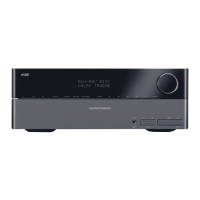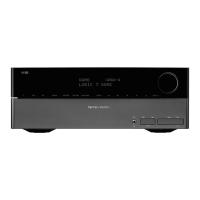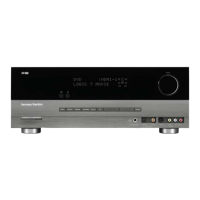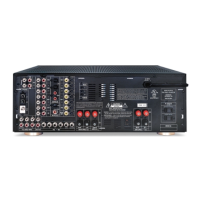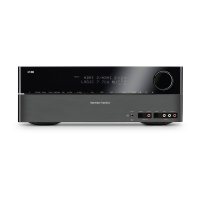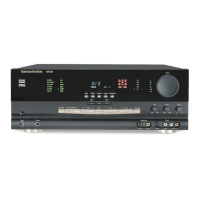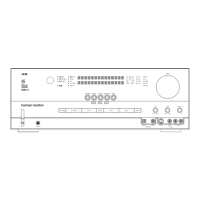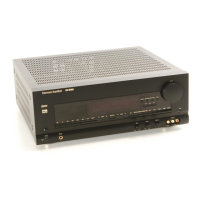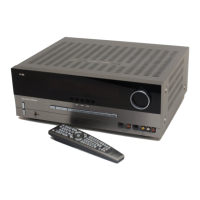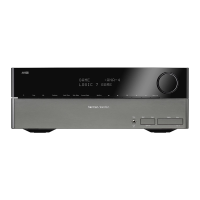
Do you have a question about the Harman Kardon AVR 360 and is the answer not in the manual?
| Impedance | 8 Ω |
|---|---|
| Receiver type | Surround |
| Audio output channels | 7.1 channels |
| Signal-to-Noise Ratio (SNR) | 100 dB |
| Total Harmonic Distortion (THD) | 0.07 % |
| Power output per channel (1KHz@6 Ohm) | 130 W |
| Power output per channel (20-20KHz@8 Ohm) | 55 W |
| Headphone outputs | 1 |
| Headphone connectivity | - |
| HDMI in | 4 |
| Digital audio optical in | 3 |
| Product color | Black, Silver |
| Audio decoders | Dolby Digital Plus, Dolby Pro Logic IIx, Dolby TrueHD, DTS 96/24, DTS Neo:6, DTS-ES (Discrete 6.1), DTS-ES (Matrix 6.1), DTS-HD, DTS-HD Master Audio |
| Handheld remote control | No |
| Apple docking compatibility | Not supported |
| Connectivity technology | Wired |
| Supported radio bands | AM, FM |
| Preset stations quantity | 30 |
| Depth | 382 mm |
|---|---|
| Width | 440 mm |
| Height | 165 mm |
| Weight | 13400 g |
Key safety guidelines and warnings for operating the apparatus safely and preventing hazards.
Safe practices for power connection, voltage verification, extension cord use, and AC power cord handling.
Guidelines for safe installation location, cabinet access, moving the unit, and proper cleaning methods.
Product compliance details with relevant technical standards and regulations.
Overview of the AVR 460/AVR 360's capabilities, including audio section and surround modes.
Details audio/video I/O, user interface, and supplied accessories for setup and operation.
Description of power status LEDs, Standby/On switch, and primary function buttons on the front panel.
Explanation of navigation controls, message display, volume knob, and the IR sensor's function.
Details connections for FM/AM antennas, AC power, digital audio, and HDMI inputs/outputs.
Covers analog audio/video, Zone 2 audio outputs, and IR input/output connections.
Instructions for connecting a subwoofer and The Bridge III docking station for iPod/iPhone.
Layout of the main remote and how to select and operate different source devices.
Explanation of buttons for AVR/device control, navigation, setup, special functions, and mute/sleep.
Operation of the Zone 2 remote and instructions for battery disposal.
Components of a home theater system and explanation of multichannel sound concepts.
Guidelines for speaker positioning and overview of different surround sound technologies.
CEA color coding, subwoofer output details, and general connection advice.
General guidelines for connecting source components and loudspeakers to the AVR.
Detailed information on HDMI, Coaxial, Optical digital, and analog audio connections.
Description of video connections (HDMI, Component, Composite) and antenna/USB port functions.
Guidelines for optimal placement of front, center, side surround, and back surround speakers.
Advice on positioning the subwoofer for best bass response.
Steps to plan your system connections, including choosing best video and audio input types.
Instructions for assigning video and audio inputs to specific source devices.
Step-by-step guide to connect sources, TV, speakers, antennas, and IR systems.
Methods for installing multizone audio and setting up IR control for remote operation.
Instructions for programming the remote, inserting batteries, and initial power-on procedures.
Guide to navigating the AVR's on-screen menu system for configuration.
Step-by-step guide to using EzSet/EQ™ for automatic speaker setup and room calibration.
Configuring audio/video inputs, assigning settings for sources like Audio Effects and Video Modes.
Setting video output resolution, HDMI bypass, and adjusting audio/video lip sync.
Steps to turn on the AVR, adjust volume, and use Dolby Volume processing features.
Using mute, sleep timer, accessing audio effects, and video mode adjustments.
Using headphones, switching sources, and tips for resolving common video issues.
Instructions for radio operation, RDS features, program search, and making recordings.
Using The Bridge III for iPod/iPhone playback, including video and slideshows.
Guide to selecting and configuring various surround sound modes for different content.
A table listing common symptoms, their causes, and recommended solutions for unit malfunctions.
Procedure for resetting the AVR to factory defaults and information on setting memory retention.
Reference tables for recommended source component connections and default source setting configurations.
Detailed technical specifications for the audio section, video section, and general unit parameters.

